PHYSIOLOGY Organ Systems Homeostasis Distinguish between a
PHYSIOLOGY
Organ Systems & Homeostasis
Distinguish between a cell, a tissue, an organ, and an organ system.
List each of the organ systems in the vertebrate body and describe the role each plays.
What is “homeostasis”?
What is the effect of “negative feedback”?
How do two hormones work together to maintain homeostasis?
Reproductive System
Q. Where are sperm made? Where are eggs made?
Q. Are sperm and eggs created via mitosis or meiosis?
Q. How many sperm are made from a precursor cell? How many eggs?
Q. Which gamete contributes more material to the resulting offspring – sperm or eggs?
Q. Outline the steps by which hormones regulate the production of sperm and eggs –
Q. What is a follicle?
Q. What are the end-products of spermatogenesis? … oogenesis?
Q. What diagnosis would you make if a woman’s progesterone levels were low? (refer to the in-class worksheet)
Q. Birth control pills taken orally by women typically contain a synthetic progesterone. How would this prevent pregnancy? (refer to the in-class worksheet).
Contraception
Q. List the contraceptives whose mode of action is to create a physical barrier between sperm and egg.
Q. List the contraceptives whose mode of action is to create a chemical barrier between sperm and egg.
Q. List the contraceptives whose mode of action is to manipulate physiological processes of ovulation & implantation.
Q. What are the relative failure rates of each of these contraception options? List them in order from least effective to most effective.
Conception
Q. What is the pathway sperm follow from the testes to the ovum?
Q. What is the pathway eggs follow from the ovaries to implantation (assuming it gets
fertilized)?
Q. What is “polyspermy” and why is it necessary to prevent it?
Q. What does the fertilized egg do to prevent polyspermy?
Q. What is the “fertilization membrane”? When is it formed?
Embryo Development
Q. What is a “zygote”?
Q. Once fertilized, does the zygote undergo mitosis or meiosis in order to create a multicellular organism during cleavage?
Walk through the steps of cleavage and gastrulation using technical terms.
Q. What tissue layer is created by the cells that fold inward making the “pouch” inside the hollow ball?
Q. What organs are derived from this germ layer?
Q. How is the middle layer (mesoderm) formed?
Q. What organ systems are derived from this germ layer?
Q. What happens during nervous system formation (neurulation)?
Q. What tissue layer gives rise to the nervous system?
Q. What other structures form alongside the nerve chord at this time?
Q. At what point does the embryo become a fetus?
Q. What are the key developmental milestones that occur during each of the three trimesters of pregnancy?
Q. What is the role of oxytocin in reproduction?
Body [Re]Building
Q. Which engineered tissues have been implanted into humans so far?
Q. What is the difference between bioengineering an organ and traditional organ transplants?
Q. According to the graphic in your textbook, which organ is most needed for transplants? (that is which organ has the greatest unmet demand for organ donation?
Cardiovascular system
Q. What are the major components of blood?
Q. What molecule in the blood is responsible for transporting oxygen gas in the blood stream?
Q. How long can you go without oxygen before suffering irreversible brain damage?
Q. Distinguish between arteries, veins, and capillaries.
Q. In which vessels does gas exchange between the blood and tissues/lungs take place?
Relate the exchange of CO2 and O2 across cell membranes to movement of molecules down their concentration gradient (lab).
Q. Under normal conditions, what is the concentration gradient of CO2 in the blood relative to the alveoli in the lungs? Which direction will CO2 move at the capillary-alveoli interface?
Q. Under normal conditions, what is the concentration gradient of O2 in the blood relative to the lungs? Which direction will O2 move at the capillary-alveoli interface?
Q. Answer the same questions for the capillary-tissues interface.
Q. In a four-chambered heart, where does the blood go after it leaves the right atrium? (Give the entire pathway ending back in the right atrium).
Q. Why is the wall of the left ventricle thicker and more muscular than the right ventricle?
Q. Which parts of the pathways you outlined above carry oxygenated blood? Which carry de-oxygenated blood?
Q. How are blood vessels bioengineered so that they can be implanted in a patient and not have the patient’s immune system reject it?
Urinary System
Q. What are the two major roles of the urinary system?
Q. Where are the kidneys located? Be able to point to them in a diagram.
Q. What is a nephron?
Q. Name/label the parts of the vertebrate nephron and indicate where it is permeable to water and where salt is pumped out.
Q. Why does water move passively out of the nephron? That is, what drives it movement in that direction?
Q. When water moves out of the nephron, where does it go?
Q. How does antidiuretic hormone control water absorption in the collecting duct?
How does alcohol affect water absorption (and therefore cause dehydration)?
Nervous System
Q. What is the function of the nervous system?
Q. For each sense, what kind of receptor is involved and what stimulates that receptor?
Q. List an example of each of the following: chemoreceptor; photoreceptor; mechanoreceptor.
Q. Distinguish between the peripheral and central nervous system?
Q. What is the role of the brain in the nervous system?
Q. Sketch and label a single neuron – be sure to label all 3 parts.
Q. How do sodium ions create an electrical signal in a nerve?
Q. Describe the dynamics of the sodium ion concentration gradient and gated sodium ion channels in creating an action potential (i.e., causing the nerve to “fire”).
Q. What is a neurotransmitter?
Q. What is the role of neurotransmitters in the nervous system?
Q. Indicate the direction that the signal travels from the sensory receptor to the brain.
Endocrine System
Q. What is the function of the endocrine system?
Q. What happens when the hormone arrives at a target tissue?
Q. Describe step-by-step, the process by which each of the following regulatory systems we covered in lecture. Identify the trigger for secretion, the organ that secretes it, the target tissue and the response of the target tissue to the hormone for each:
Sperm production
Blood regulation
Ovum production
Permeability of the collecting duct in the nephron
Q. What would happen if the pancreas did not release insulin?
Q. What would happen if tissues lacked functional receptors for insulin?
Q. Under what conditions are insulin blood levels high? … are glucagon blood levels high?
Immune System
Q. What are the three levels of protection of the immune system?
Q. What is the role of neutrophils and macrophages (“phagocytes”)?
Q. What is the role of T-cells and B-cells?
Q. What are antibodies and what do they do?
Q. Where does the macrophage get the antigens to present on its surface?
Q. When the T-cells “see” these antigens, what does it do in response?
Q. What is the role of “memory cells”?
Q. What is the relationship between vaccines and memory cells?
Q. What plant is being genetically modified so it produces the surface proteins of flu viruses for vaccine production?
EVOLUTION
Evidence that species have changed over time.
The theory of descent with modification explains so many patterns seen in life on Earth.
Q. How does descent with modification explain why the bone structure of the vertebrate forelimb (front leg) is the same regardless of what the limb is used to do?
Q. How does descent with modification explain why all vertebrate forelimbs share this basic framework even though they are used for such different things?
Q. How does descent with modification explain the similarities between vertebrate embryos in spite of the fact that they end up looking so different?
Q. How does descent with modification explain the presence of vestigial structures?
Q. Define vestigial structure and give several examples.
Q. What is an intermediate fossil? What role do they play in piecing together the evolutionary history of life on earth?
Q. Describe the changes seen in the series of whale ancestors indicating the series of events as whales evolved from terrestrial-dwelling ancestors (Figure 10.6).
Q. What do embryos tell us about the hypothesis that whales evolved from a terrestrial ancestor?
Gene Pool
Q. Explain what a gene pool is.
Q. In what way is a population best described as a gene pool?
Q. How does the founder effect or a genetic bottleneck affect the gene pool of a population? Why are these effects often harmful for the population?
Natural Selection.
Q. What are the three components of the natural selection “engine”? List them in order.
Q. How are brand new variations added to a gene pool?
Q. What is the role of sexual reproduction in creating variation in a population?
Q. One component of natural selection is when more offspring are created than the environment can support – what is the role of overpopulation in driving natural selection?
Q. For each scenario below, (a) describe the relevant variation, (b) identify the selection pressure/agent, (c) describe the outcome of selection:
Pesticide resistance in the cotton bollworm.
Change in wing coloration in the peppered moth.
Change in number of days the apple maggot flies took to complete larval development.
Development of antibiotic resistance in bacteria.
Q. What is MRSA? What is VRSA
Q. Why is there so much concern about VRSA?
Q. Why do the vancomycin-resistant bacteria have a higher frequency in the population after treatment with vancomycin?
Q. What is a “plasmid”?
Q. How does horizontal gene transfer accelerate the rate of evolution in prokaryotes?
Q. What is the role of Enterococcus in the development of VRSA?
Q. What is the trend in the development of new antibiotics from 1980 until the present? (graphic page 193)
Q. How can you make a difference helping prevent antibiotic resistance?
Q. Why is saying that “natural selection is a random process” incorrect?
Q. Mutation helps set the stage for natural selection. Is mutation a random event?
Q. What is genetic drift? Is genetic drift random? Explain.
Q. In selection, who experiences selection? Choose one: the community / the population / individuals
Q. In selection, who evolves? Choose one: the community / the population / individuals / the selective pressure
Fitness.
Q. What do biologists mean by the term “fitness”?
Q. How is fitness calculated? (explain and also be able to calculate it if given data).
Solution
Distinguish between a cell, a tissue, an organ, and an organ system.
A cell is a smallest unit of life which can individually perform all the functions like respiration, nutrient absorption, excretion etc. example - nerve cell, WBC
Structurally and functionally similar cells group together to form a tissue. Example - Connective tissue
Tissue with similar structure and function organize to form a specialized organ. Example - Liver, kidney
What is a “zygote”?
Zygote is a diploid cell formed by the fertilization process when the male and the female gamete fuse together.
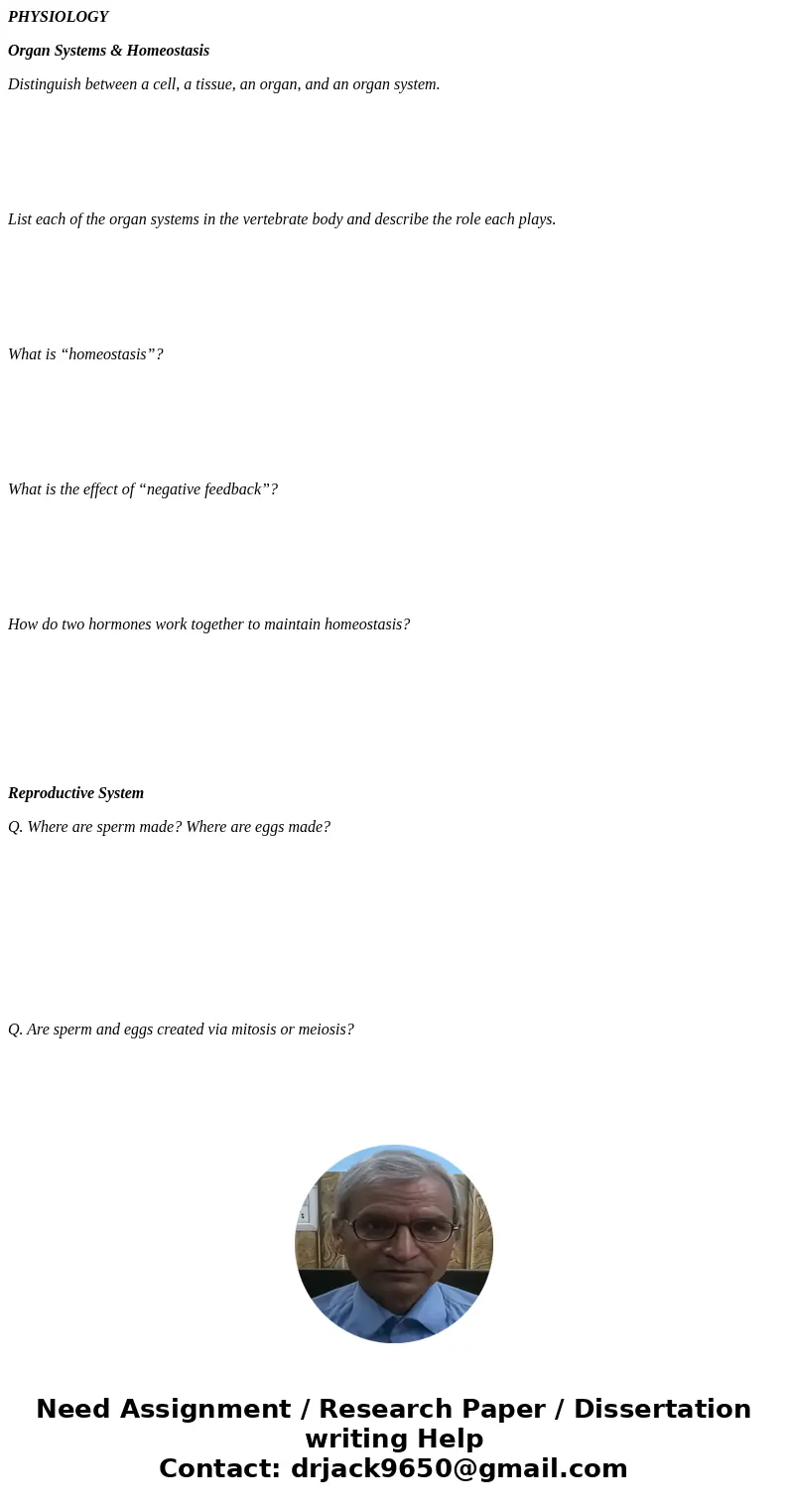
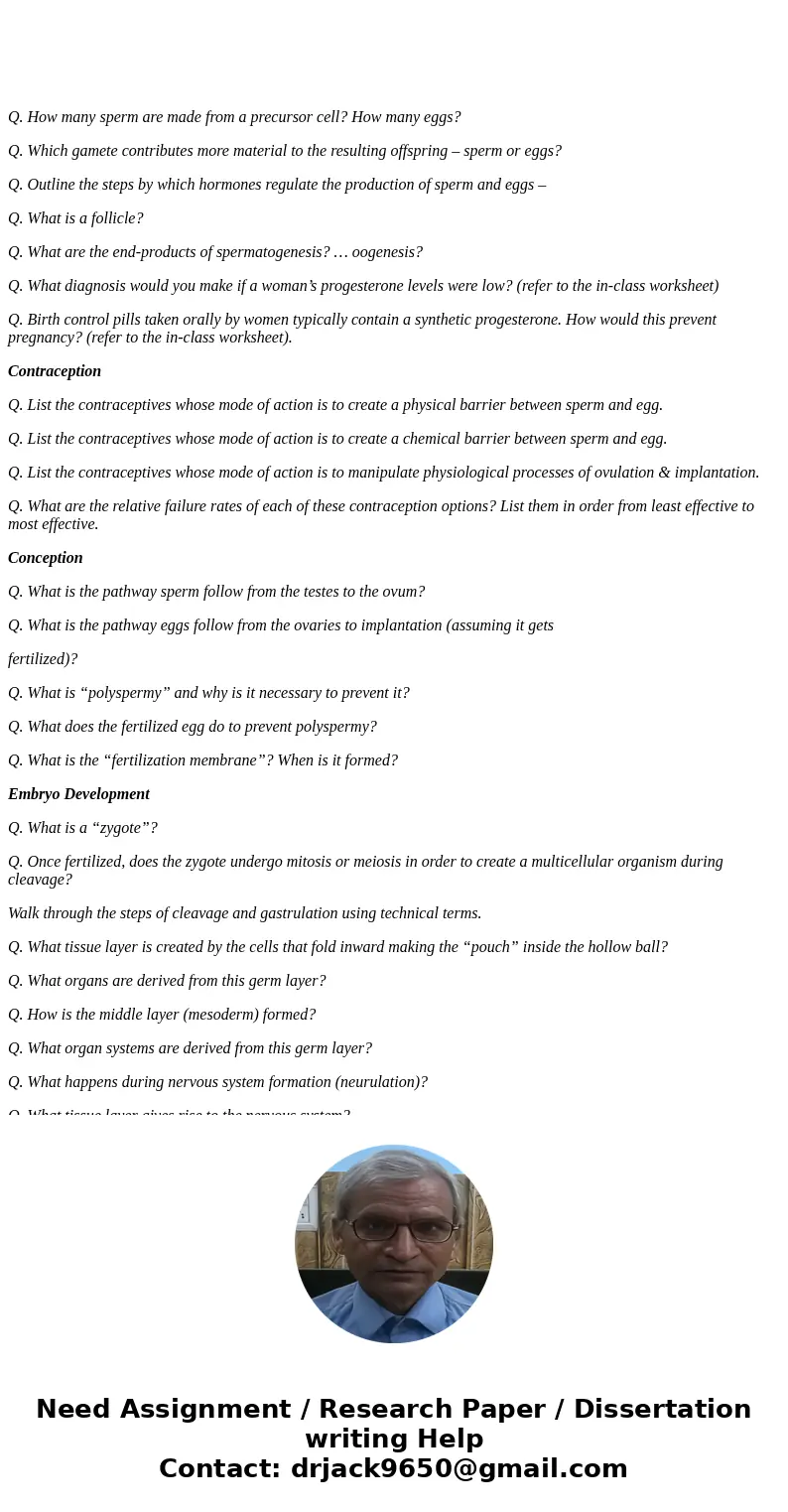
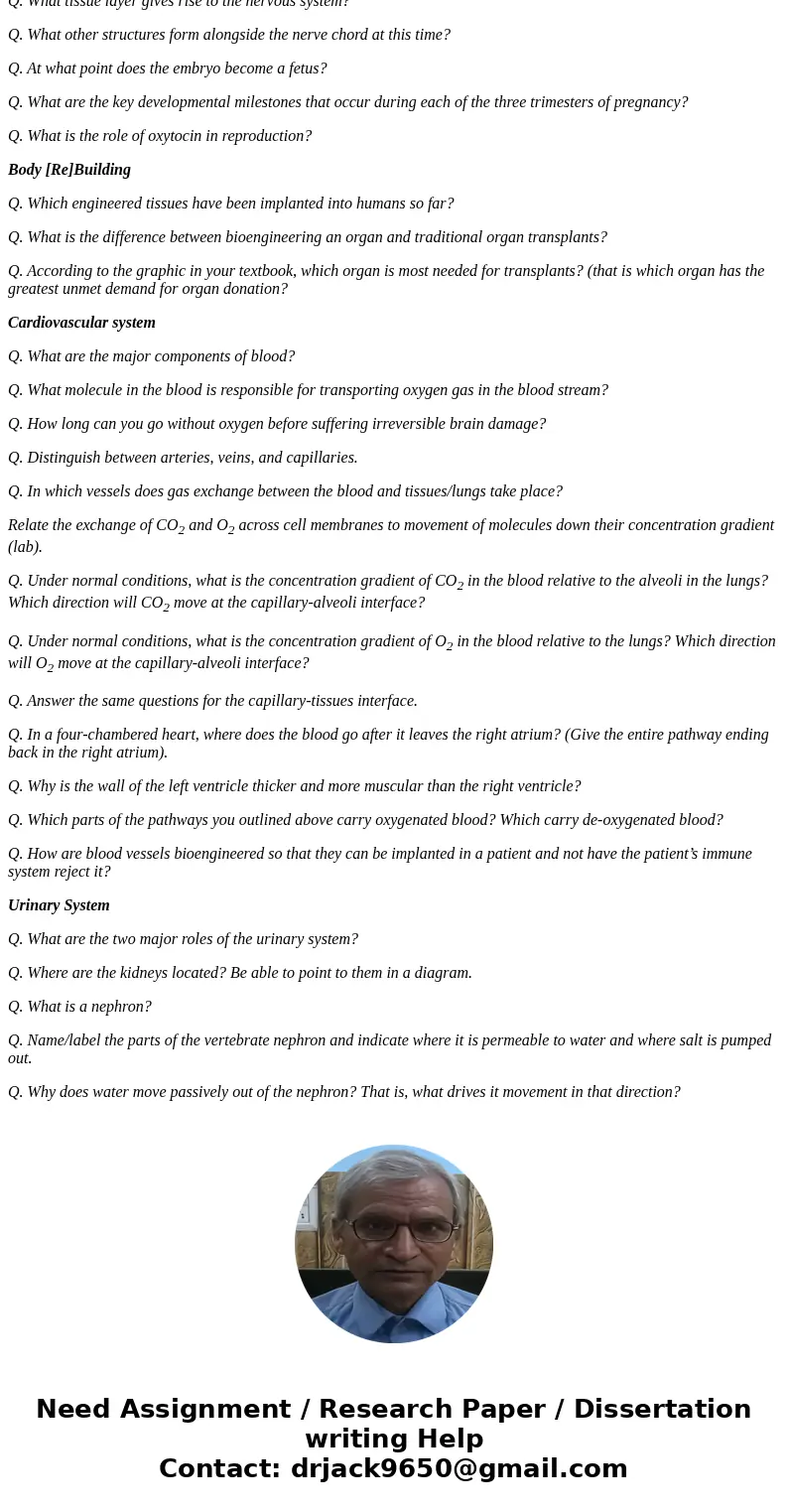
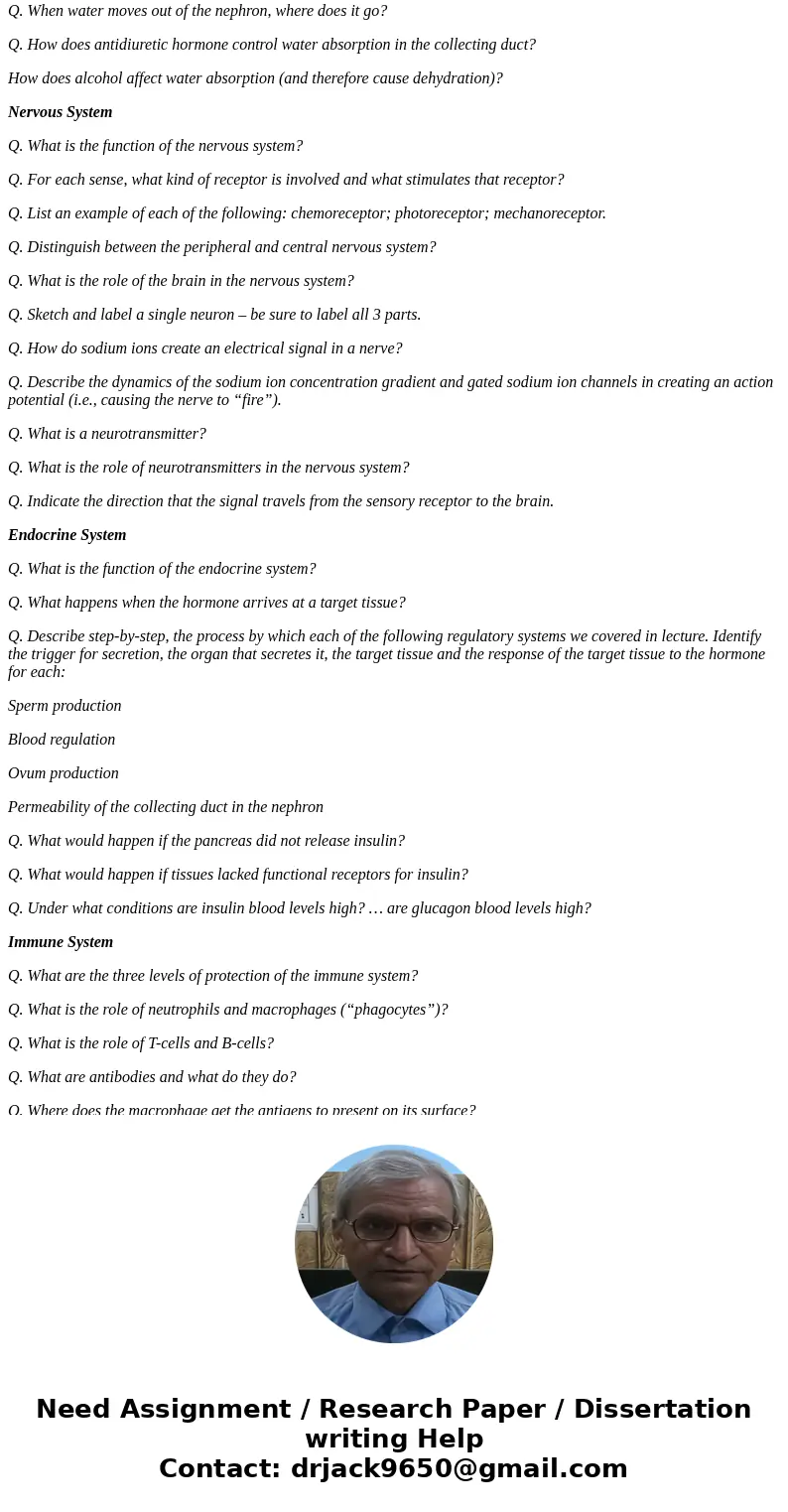
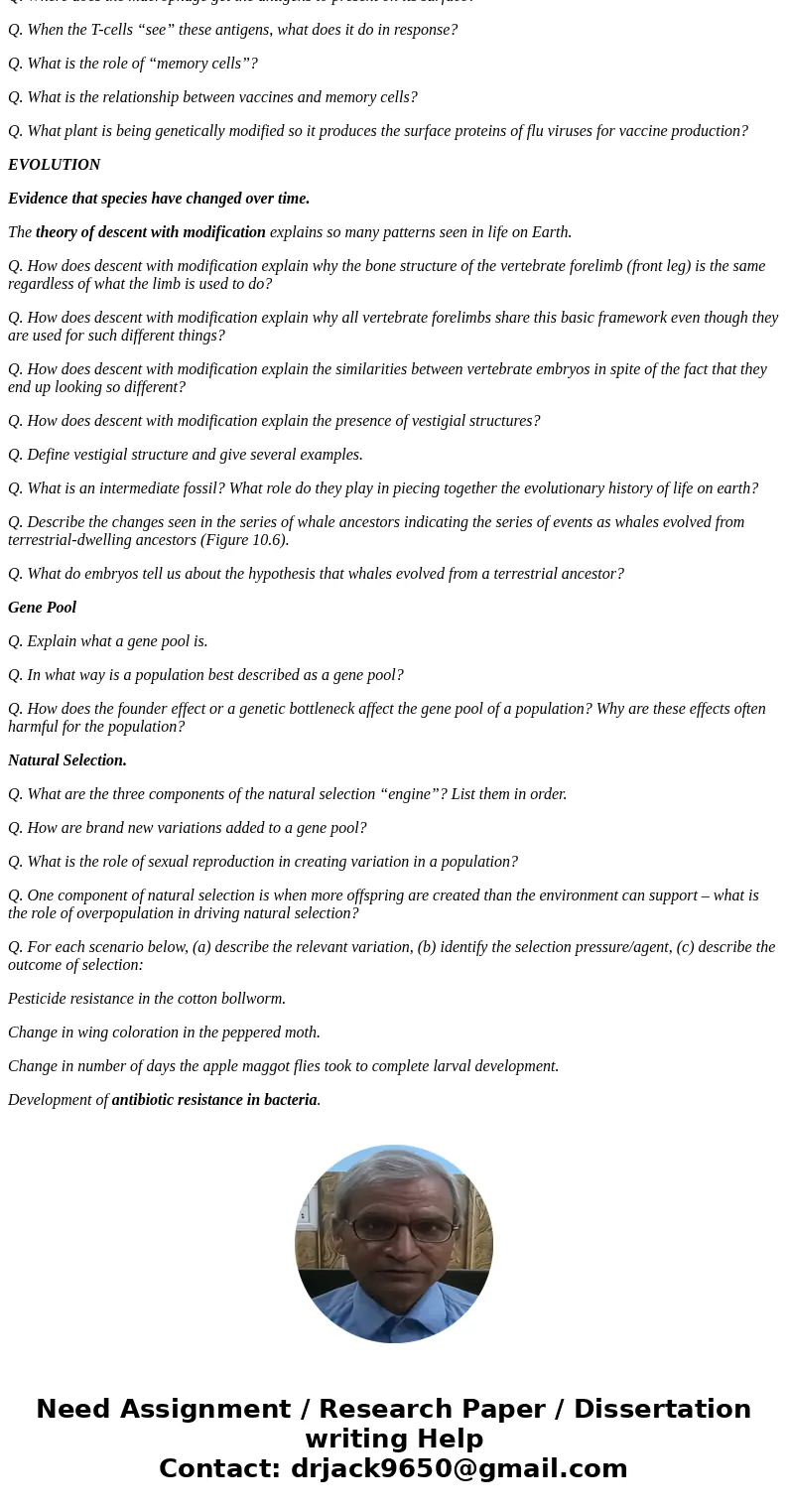
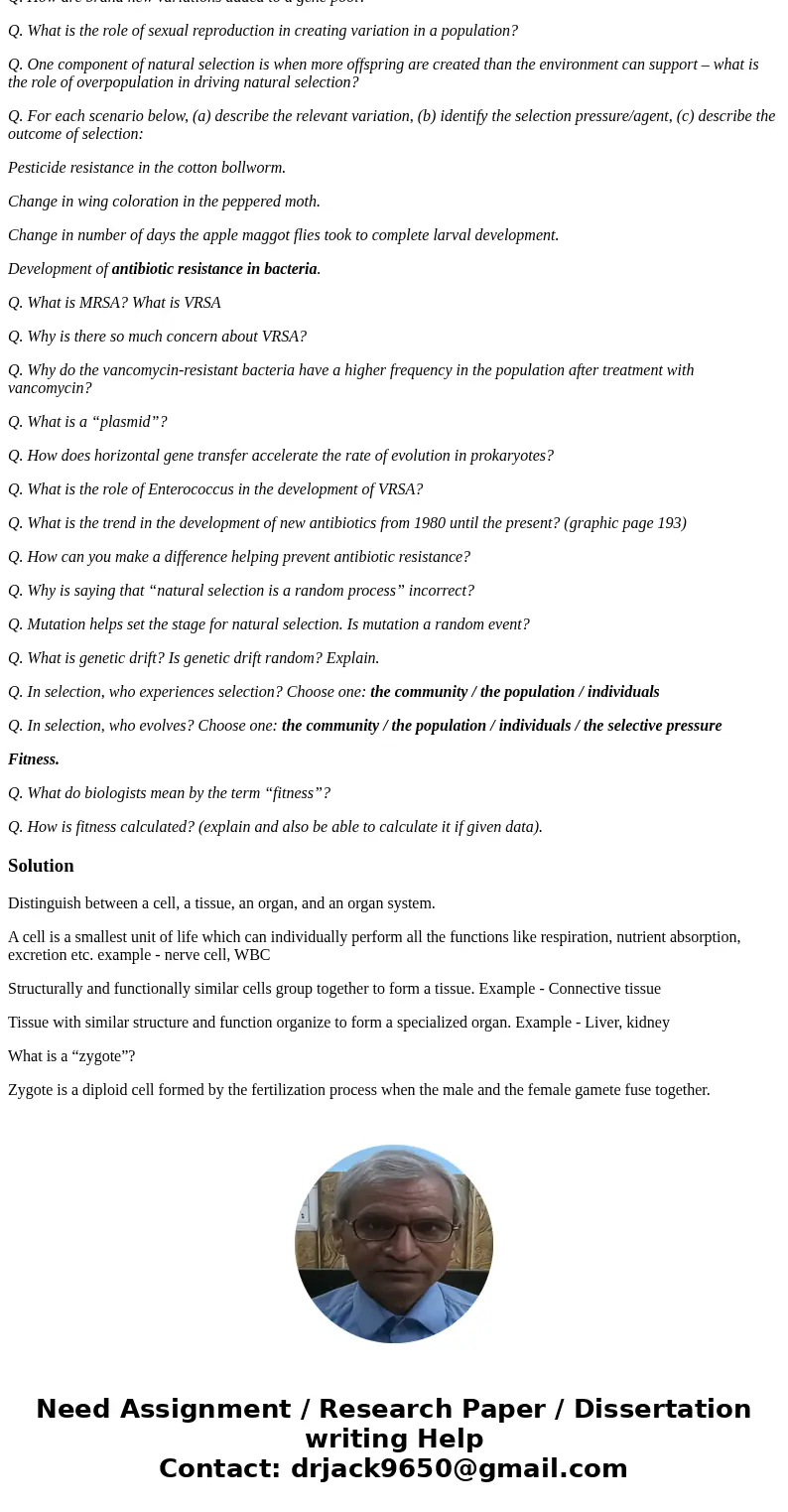
 Homework Sourse
Homework Sourse